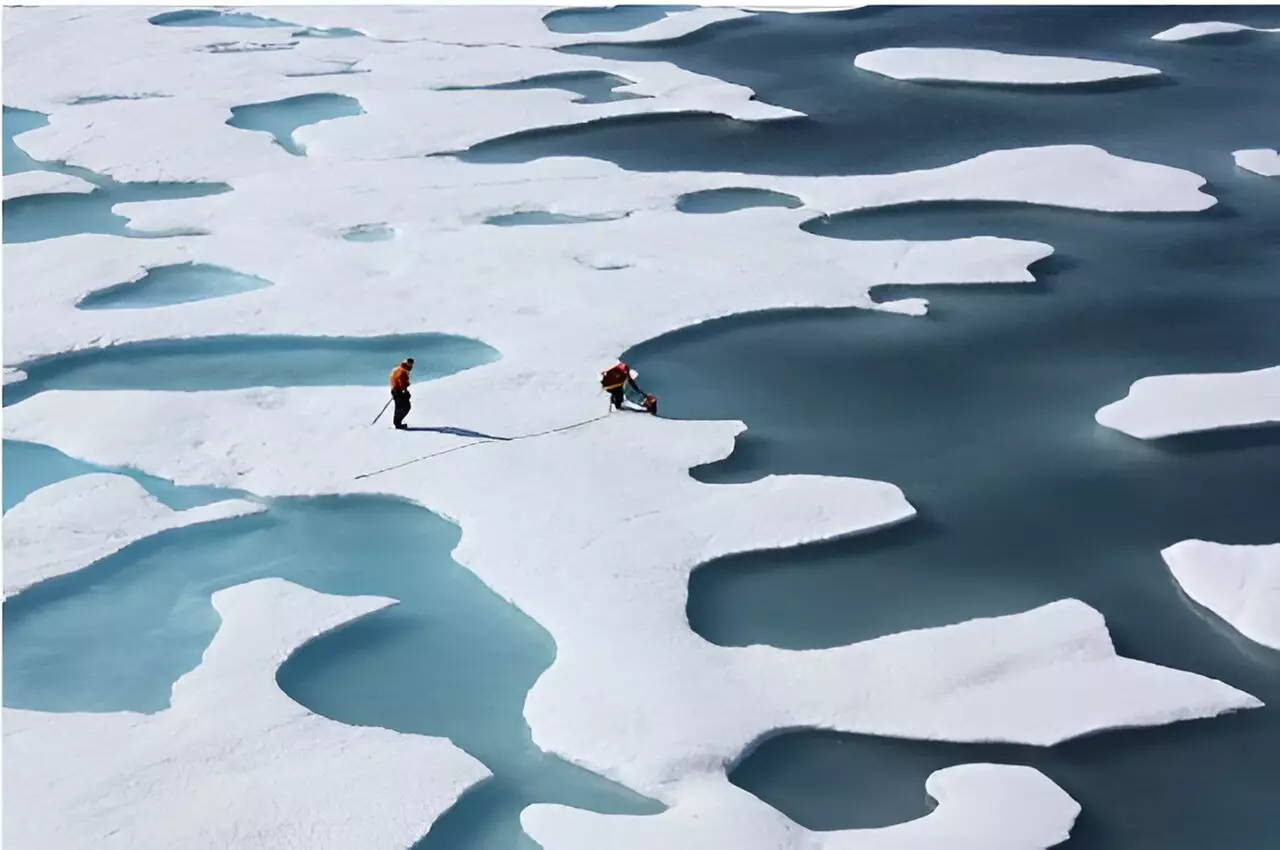Recent discoveries, primarily from the University of Michigan, expose a troubling reality: the Arctic is losing its ability to cool the planet at an alarming rate. Researchers estimate that since 1980, about a quarter of the Arctic’s cooling power has diminished, while the world has witnessed a staggering 15% dip. This decline correlates with the ongoing disappearance of sea ice, primarily driven by climate change. The implications of this phenomenon extend far beyond the poles; they infiltrate global weather patterns, ecological stability, and ultimately human livelihoods.
The critical mechanism at play here involves the reflective properties of sea ice. Traditionally, sea ice has served as a natural shield against solar radiation. As the ice melts and reduces in area, it not only exposes darker ocean waters—absorbing more heat—but also compromises the ice that remains. Melted ice becomes thinner, moisture-prone, and less reflective, contributing to an exacerbated warming feedback loop. This less reflective ‘dirty’ ice transforms the Arctic into an increasingly warmer space, with ramifications that echo through the atmosphere.
An Uneasy Comparison: Arctic vs. Antarctic
For years, the Arctic has been the poster child for climate change, bearing the brunt of its consequences. However, until recently, Antarctica—often viewed as a bastion of resilience—has seemingly defied the odds with stable sea ice levels. This perception shifted drastically after 2016 when a stunning event unfolded; an area larger than Texas melted from one of Antarctica’s largest ice shelves. Post-2016, researchers have begun to notice that Antarctic sea ice too is retreating, with a consistent deterioration in its cooling effectiveness.
Incredibly, when analyzed on a wider scale, the Antarctic has seen a 40% increase in warm feedback from ice loss since 2016. This extraneous shift is crucial; it indicates that previous climate models may greatly underestimate the radiative effects caused by declining sea ice in both polar regions. As the Antarctic joins the Arctic in this climate crisis, it raises an alarming question: are we witnessing the dawn of a severe feedback loop that can no longer be mitigated?
Lessons Learned from Satellite Data
The research team led by Mark Flanner has harnessed satellite data spanning over four decades, drawing from cloud cover and solar radiation metrics to unveil the sea ice cooling power analysis. This use of long-term data marks a significant evolution in climate science methodology, enabling researchers to make better-informed projections based on tangible observations rather than speculative climate model simulations.
This shift demonstrates the power of engaging advanced technologies in climate research. No longer must we rely solely on theoretical projections that stretch decades into the future. As teams like Flanner’s continue to innovate in this domain, we may find not only more accurate temperature predictions but also a clearer understanding of how these changes negatively impact weather patterns, wildlife, and human populations.
The Need for Urgent Adaptation Strategies
Given these daunting revelations about ice melting and the subsequent feedback loops on global temperature rise, the global community must urgently revise climate adaptation strategies. Raising awareness and incorporating updated data into policy discussions will be essential in preparing for the inevitable changes that are already underway.
Current climate models might reflect alarming truths, but they also have room for improvement. They should now reflect the updated findings regarding the diminishing cooling power of sea ice and account for the implications of thinner, less reflective ice. As climate adaptation plans evolve, they will need to integrate these new insights, encompassing a more sobering but accurate picture of our changing planet.
This is a call to action. Climate scientists and policymakers must collaborate to ensure that these findings do not simply go unaddressed. The stakes are high; inaction not only risks ecosystems but also threatens future generations’ right to a stable climate. We stand at a pivotal moment—will we heed the warnings, or risk irreparable harm to our planet?


Leave a Reply